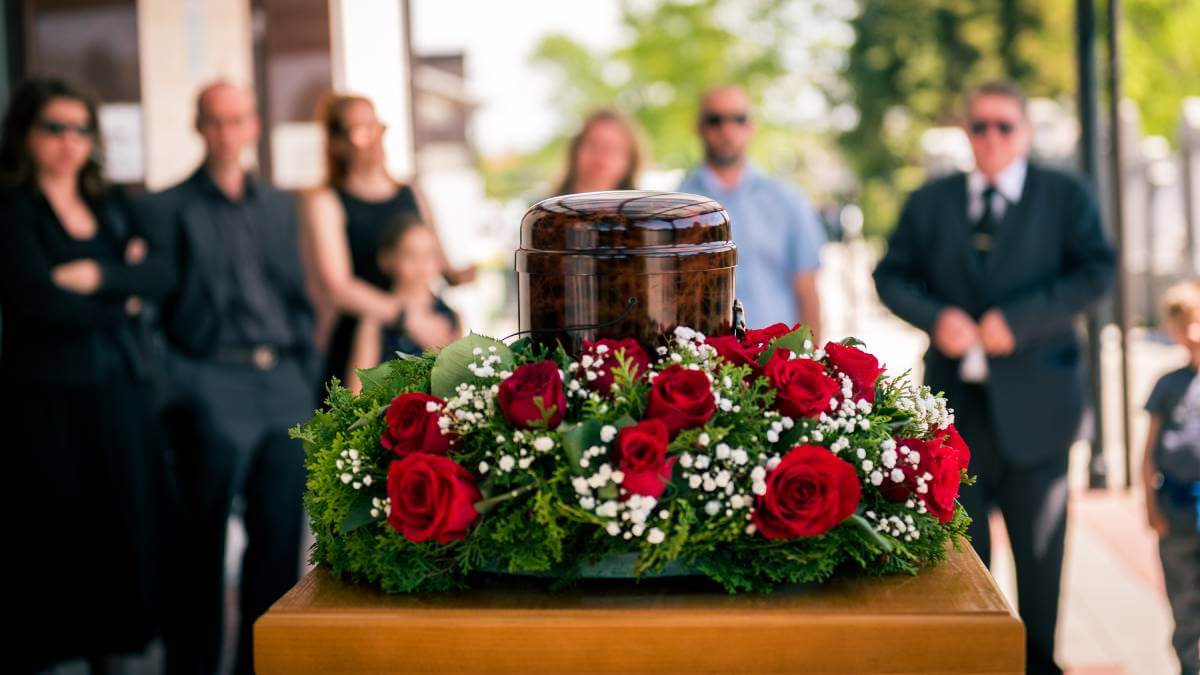At some point, you’ve probably thought about what you would like your loved ones to do with your body after you die.
While some of us would prefer to just rest in peace the old-fashioned way — in a coffin beneath the ground — others prefer a different send-off.
For many Australians, cremation is a popular choice, with the Salvation Army estimating around 70 per cent of funerals now involve cremation.
While many people may prefer keeping the remains of their loved one at home, others may be inclined to scatter them at a location that was special or meaningful to their beloved.
Take for example the Sydney Swans fan who scattered her nan’s ashes in the middle of the Sydney Cricket Ground after ‘Buddy’ Franklin kicked his 1000th goal.
It is unknown whether she was fined or reprimanded at the time.
The ABC approached the Sydney Cricket Ground Trust for comment regarding their official policy on people seeking to scatter ashes at the venue, but did not receive a response.
The Melbourne Cricket Ground has previously warned cricket and AFL fans against scattering ashes on the turf, after employees found piles of ashes on the playing surface following a public open day.
“The most important message for anyone who wants to do this is to understand that over time their loved one’s ashes will actually be removed from the MCG and discarded into waste, because we replace the turf quite regularly as part of our maintenance program,” a Melbourne Cricket Club spokesperson said after that event.
Scattering ashes by hand is one way to do it — others have gone a different route, such as the family who farewelled to their husband and father by organising for his ashes to be incorporated into a firework and shot into the sky as part of an art display.
Then there was the instance of a fan allegedly tossing a bag containing her mother’s ashes onto the stage during a performance by Pink at the British Summertime Festival in London in June.
The pop star was heard to say “I don’t know how I feel about this”, before placing the bag next to a speaker and continuing to perform.
What you can and can’t do with ashes
In Australia, the rules around scattering ashes are fairly relaxed. However, to do so in a public place — such as a reserve or botanical garden — may require a permit, as in the example of Hobart, where the city council requires a form to be completed and a permit issued.
And while there may be hoops to jump through with approvals and such, there are other important things to think about, says independent funeral director Rebecca Lyons.
“People scatter ashes all the time without permission and that’s not necessarily the way it should go.
“You have to be aware that ashes in their raw form have the pH of bleach, so they’re not actually good for the environment.
“If you’re going to do it in a public place, or a place managed by the council, you really should be reaching out to the council to find out what the guidelines are.”
Similarly, when choosing a location for scattering ashes, it is important to consider if it is a culturally significant site.
“You’d have to question why you wanted to scatter ashes at a sacred site of someone’s culture,” Ms Lyons said.
“If you’re going to go on land that is sacred to any cultural group, you should ethically seek permission from them to do that.”
Scattering ashes on any type of private land will also require the permission of the landowner before doing so.
Are there different rules for scattering ashes at a beach or river?
Permits aren’t required for scattering ashes in Australian waters or oceans, but Ms Lyons suggests the following considerations be taken into account:
- If you are somewhere like a beach, make sure you’re aware of your surroundings and be mindful of people nearby.
- Make sure you scatter close to the water in case of wind, and so the remains don’t blow back onto land.
- Unless you are using a biodegradable urn, empty the container into the sea. Don’t throw a regular urn into the water as it will just float.
Cremation is more sustainable — it’s fine for the environment, right?
Cremation has long been flagged as a more environmentally friendly option to traditional cemetery burials because it uses fewer resources, saves land space and doesn’t emit toxins from the embalming process.
But it is still not great.
Human ashes may contain trace amounts of chemicals or heavy metals, leading to soil and water contamination if they are not dispersed or treated properly before being scattered.
Ms Lyons said mixing ashes with pH-balancing products and using the correct scattering technique can largely offset the negative environmental impact.
“The best way to scatter them is going to be to dig a [shallow] and long trench. Spread them out in that little trench and then cover it over.”
“If you bury ashes in a clump or scatter them in the ground in a sort of tight clumped space, tree roots will grow around them and some younger trees won’t grow at all.
“You need to be able to disperse the fragments and you need to be able to neutralise the pH a little bit — there are products on the market now that do that,” she said.
“You’re not adding value to the environment by scattering them in raw.”
Do you want your ashes spread somewhere that’s significant to you? Does this information change that? Share your thoughts in the comments section below.
Also read: Ashes used for jewellery and tattoos as burials decline
 © 2020 Australian Broadcasting Corporation. All rights reserved.
© 2020 Australian Broadcasting Corporation. All rights reserved.
ABC Content Disclaimer

